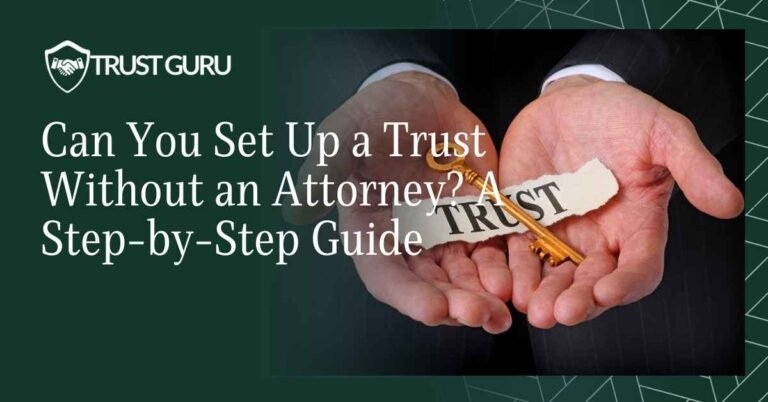Living trusts are an essential estate planning tool designed to simplify the transfer of assets, avoid probate, and ensure a loved one’s wishes are honored.
However, when the grantor—the creator of the trust—passes away, many heirs and trustees are left wondering, What happens next? This guide will walk you through the entire process of administering a living trust after death, address common challenges, and provide actionable advice.
Whether you’re a trustee, beneficiary, or simply looking for clarity, this article is here to help you navigate this complex process.
Article Preview: What You’ll Learn:
- Understanding the Role of the Trustee After Death
- Steps to Take Immediately After the Grantor’s Passing
- Common Problems With Living Trusts After Death
- Tax Implications of a Living Trust
- How to Distribute Assets to Beneficiaries
- Resolving Disputes and Legal Challenges
- When to Seek Professional Help

Understanding the Role of the Trustee After Death
When the grantor of a living trust passes away, the trustee—often a family member or trusted individual—steps into a crucial role. The trustee’s primary responsibility is to manage, settle, and distribute the trust’s assets according to the grantor’s instructions. This requires acting in the best interests of the beneficiaries while adhering to legal and fiduciary obligations.
Key Duties of the Trustee:
- Notify beneficiaries of the grantor’s death.
- Gather and secure all trust assets.
- Settle any outstanding debts or liabilities.
- File final tax returns and pay applicable taxes.
- Distribute assets to beneficiaries according to the trust’s terms.
This article provides comprehensive guidelines for individual executors and trustees, detailing their responsibilities and best practices.
To make this process smoother, trustees can benefit from Trustee Services to ensure they meet their fiduciary responsibilities effectively.

Steps to Take Immediately After the Grantor’s Passing
If you’re a trustee or an heir, knowing what to do in the immediate aftermath of the grantor’s death can help ensure a smooth administration process.
- Obtain the Death Certificate
This document is critical for accessing financial accounts, notifying institutions, and settling debts. - Review the Trust Document
Carefully read through the trust to understand its terms, the distribution plan, and the grantor’s specific wishes. - Notify Financial Institutions and Beneficiaries
Inform beneficiaries about their inclusion in the trust and notify banks, investment firms, and insurance companies about the grantor’s passing. - Inventory the Trust Assets
Identify and value all assets held within the trust. This may include real estate, bank accounts, stocks, or personal property. Trust Funding Assistance services can help ensure all assets are accounted for. - Work With Professionals
Depending on the complexity of the trust, you may need to consult estate attorneys, financial advisors, or tax professionals. For assistance with transitions, consider Trustee Transition Planning services.
This article outlines the essential steps a trustee should take in the first six months following the grantor’s death, ensuring proper trust administration.

Common Problems With Living Trusts After Death
While living trusts are designed to minimize complications, issues can still arise. Here are some of the most common problems and how to address them:
- Unclear Distribution Instructions
Ambiguities in the trust document can lead to disputes among beneficiaries. Trustees should consult legal counsel to interpret unclear provisions. - Failure to Fund the Trust Properly
Assets not transferred into the trust during the grantor’s lifetime may need to go through probate. Learn more about Asset Protection Trusts to avoid such issues. - Disputes Among Beneficiaries
Heirs may disagree over asset division, leading to emotional and legal conflicts. Mediation can often help resolve these disputes. - Trustee Mismanagement
An inexperienced trustee may make mistakes, such as mishandling funds or failing to meet legal obligations. Professional services like trustee services can prevent costly errors. - Tax Implications
Trustees and beneficiaries should understand potential tax liabilities, including estate taxes or capital gains taxes. Tax Compliance can help navigate these complexities. - Legal Challenges
Heirs or third parties may contest the trust, claiming undue influence or errors in its creation. Legal representation is crucial in these cases. - Administrative Delays
Settling debts, selling properties, and liquidating investments can take time, especially for complex estates. .

Tax Implications of a Living Trust
One of the benefits of a living trust is that it helps avoid probate, but taxes implications may still come into play. Trustees and beneficiaries should be aware of the following:
- Estate Taxes: Depending on the size of the estate, federal or state estate taxes may apply.
- Income Taxes: Trust income generated during administration may need to be reported and taxed.
- Capital Gains Taxes: Selling trust assets, such as real estate, can trigger capital gains taxes, although beneficiaries often benefit from a “step-up in basis.”
The IRS’s Publication 559 offers detailed information on the tax responsibilities of survivors, executors, and administrators, including those managing living trusts.

How to Distribute Assets to Beneficiaries
Once debts are settled and taxes are paid, the trustee’s next responsibility is to distribute the remaining assets to the beneficiaries as outlined in the trust. Here’s how:
- Liquidate Non-Cash Assets (if needed)
If the trust contains property or investments, these may need to be sold to provide equitable distributions. Real Estate Protection services can help safeguard property values during this process. - Allocate Specific Gifts
Distribute specific items or monetary amounts as directed by the trust. - Distribute Residual Assets
After all obligations are met, remaining assets can be divided among beneficiaries. - Obtain Signed Receipts
To protect themselves, trustees should collect signed acknowledgment forms from beneficiaries once distributions are complete.

Resolving Disputes and Legal Challenges
Disputes over living trusts can arise even in well-planned estates. Common reasons include disagreements over asset valuation, perceived favoritism, or concerns about trustee actions.
Tips for Resolving Disputes:
- Encourage Open Communication: Transparency can reduce misunderstandings.
- Use Mediation: A neutral third party can help resolve conflicts without the expense of court proceedings.
- Seek Legal Support: If disputes escalate, an attorney specializing in trust law can provide guidance.
To prevent disputes from escalating, Beneficiary Education services can ensure everyone understands the trust’s terms and intent.

When to Seek Professional Help
Administering a living trust after death can be overwhelming, particularly for first-time trustees or when the estate is complex. Seeking professional assistance ensures the process is handled correctly, minimizing delays and legal risks.
At Trust Guru, we specialize in guiding trustees and beneficiaries through the trust administration process. Our team of experts can help you:
- Understand your role and responsibilities.
- Navigate tax requirements.
- Resolve disputes quickly and fairly.
- Ensure assets are distributed according to the grantor’s wishes.
Explore our comprehensive Living Trust services to learn how we can help.
Final Thoughts
Administering a living trust after death requires careful planning, clear communication, and professional guidance to avoid common pitfalls. Whether you’re a trustee managing complex assets or a beneficiary seeking clarity, the process can feel daunting—but you don’t have to face it alone.
Contact Trust Guru today for expert assistance with your trust services. Let us help you ensure a smooth and stress-free administration process!













